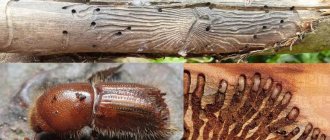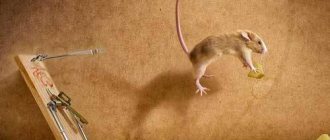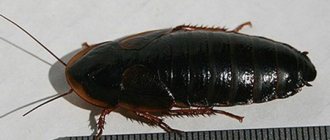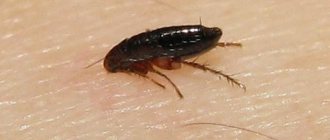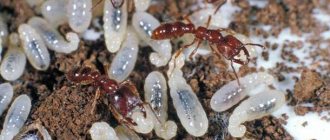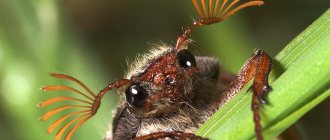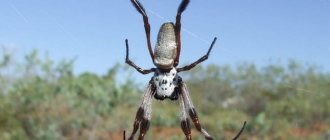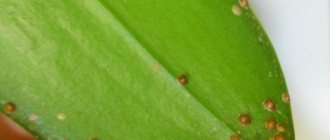Causes of pests in potatoes
There are many reasons why pests attack potatoes. Here are the main ones:
- Infected seed material.
- Failure to comply with sanitary rules: garden tools have not been disinfected since last year.
- Violation of the rules of crop rotation - planting potatoes in an area where tomatoes, eggplants, and sweet peppers previously grew. These crops have many common pests. The best predecessors are cucumbers, onions and radishes.
- Growing potatoes in one place for several years in a row.
- Unfavorable climatic conditions for potatoes, seasonal features.
- Errors in agricultural technology - early or late planting, excessive watering, lack of loosening and hilling, an abundance of weeds.
All these factors are not conducive to obtaining a rich harvest, because not only you love potatoes, but also voracious pests.
Reference! Plants can be infected with viruses and pests by adding new soil or by watering with water from contaminated reservoirs.
Wireworm
Wireworms are the larvae of click beetles that have a cylindrical
a rigid, segmented body resembling a piece of wire. The larvae live in the soil for 3–4 years, and the development of one generation of click beetles lasts up to five years.
Wireworms are especially active when there is a lack of moisture in the soil. They live in the zone of tubers and roots, damaging them with numerous tunnels, thereby reducing the seed and commercial qualities of potatoes. Root crops affected by wireworms become more sensitive to fungal and bacterial infections.
In the fight against wireworms, the following are important:
- deep plowing or digging up the soil in spring and autumn. Since the larvae, once in the upper layers of the soil, die in winter;
- weed control;
- the use of natural baits - pieces of potatoes, beets or carrots, which are placed in the soil between rows at a distance of 10 cm from each other. After a few days, the bait is removed from the soil and the larvae are destroyed. If necessary, repeat the procedure with a new portion of root vegetables;
- the use of insecticides, such as Hurricane Forte VR, FORS.
How to recognize pests in time
To protect potatoes and recognize pests in time, it is recommended to carefully inspect the shoots as soon as the first shoots appear. Do this regularly, paying attention to the presence of characteristic symptoms, and take appropriate measures at the first suspicion.
Each type of insect destroys different parts of the plant. For effective control, the type of pest is first identified and then the appropriate means are used. This will take some time; doing everything at once with some kind of universal drug “against everyone” will not work. Each specific parasite has its own specific method of elimination.
Potato scoop
Description
There are several species of this moth, but potatoes are parasitized by marsh, common heart-shaped and gnawing cutworms. Or rather, the caterpillars of these butterflies are harmful.
Insects are found everywhere, but the most favorable conditions for their development are isolated shaded and moist areas. Heavy rainfall in early summer can contribute to an increase in the number of these pests.
For the winter, cutworms lay eggs behind the leaf sheaths of wild cereals, e.g.
creeping wheatgrass. At the end of April, the hatched caterpillars migrate to the potato plantings. Over the course of two months, the caterpillars develop, during which they cause the main damage to the potatoes, gnawing holes just above the root collar and making a move inside the stem, going down and penetrating into neighboring plants.
Damaged plants quickly wither and dry out, and with high humidity they rot.
The larvae of gnawing cutworms destroy leaves and stems, making holes in them. They eat away the cavities in the tubers, leaving a peel around the edges.
How to deal with a pest
The fight against cutworms includes several methods that should preferably be used in combination:
- Destruction of weeds on the plantation, the main reserves of potato armyworm populations.
- Using pheromone traps to reduce the number of butterflies that can lay eggs for the winter.
- Impact of insecticides on the larvae located on cereal weeds and on the caterpillars that have moved onto the stems. For these purposes, you can use Decis, Tsimbush and other drugs.
Main types of potato pests
Certain types of insects live in the soil; they are able to stay there for several years in the form of larvae without revealing their presence. There are also pests that fall on potato bushes during strong winds or excessive humidity. Let us tell you in more detail about the most dangerous pests for potatoes and methods of combating them.
Colorado beetle
This striped insect is known to everyone. The most widespread and therefore the most dangerous pest of potatoes. The beetle larvae are particularly voracious when eating tops, which leads to a significant reduction in the yield of the vegetable.
Adults destroy not only leaves and stems, but also tubers. They overwinter in the ground, and in the spring, flying from one bush to another, they quickly and en masse lay eggs on the shoots as soon as they emerge from the ground. It is during this period that it is important to destroy the main population of beetles. To do this, it is recommended to use insecticides such as “Commander”, “Sonnet”, “Aktara”. Treat the bushes three times during the season, the last time 20 days before harvest.
Folk remedies include spraying bushes with strong infusions of mint, tansy and black currant. The simplest known method, and at the same time very effective, is manual collection of beetles and larvae. The procedure is carried out at least twice a week.
Wireworm and false wireworm
yellow worm up to 3 cm long, the larva of a click beetle. Destroys leaves, tubers and even the root system of potatoes. Additionally, it feeds on wheatgrass, so it is better to get rid of this weed in advance.
Deep digging of the earth in the fall and spring is recommended as the most effective way to deal with an uninvited guest. Or you can place bait between the rows of potatoes - a chopped tuber placed in the ground, and after a while remove it along with the worms. Among chemical preparations, the use of insecticides “FORS” or “Hurricane Forte VR” is effective.
False wireworms are the larvae of the darkling beetle. They feed on tubers, roots and other parts of the plant. Baits, digging, and adding wood ash to the soil before planting potatoes also help against them.
Nematode
It is difficult to see nematodes with the naked eye, they are so small. They attack the stem and roots of the potato underground, destroying the entire structure. The main characteristic sign of their attack is yellowing of the lower leaves of the tops. Nematodes can live in the ground for up to 10 years, so it is extremely difficult to destroy them, but it is possible.
Treat the entire area intended for potatoes with urea, and after harvesting, cover it generously with lime . It is also recommended to water the soil with a solution of chicken manure if it is available in large quantities.
Another remedy - the drug "Bazudin Extra" - perfectly protects not only from nematodes, but also from weevils, mole crickets, fly larvae and other parasites.
Garden moth
A small gray butterfly, whose larvae also do not mind eating all the greens and tubers of potatoes, tomatoes, eggplants and sweet peppers. Ignoring this pest can result in the loss of the entire crop.
For prevention, deep autumn digging and treatment of seed material with a strong solution of methyl bromide are suitable. Of the chemical preparations, the most effective against moths are “Sherpa”, “Zolon”, “Arrivo”.
scoop
Adult ash-colored moths, active at night, do not themselves pose a danger to potatoes, unlike their caterpillars. These green gluttons eat everything there is to eat. Destroy stems, leaves, tubers. After “lunch” they rest in the shade of wheatgrass and spend the winter there.
The best defense against caterpillars is weed control. Special pheromone traps are used against the moths themselves that lay eggs. It is advisable to use insecticides “Tsimbush” or “Decis”.
Cicadas
Jumping insects no larger than 3 cm in size, similar to a moth . During the day they live in anthills (they have interspecific cooperation with ants), and at night they drink plant juices. This leads to a slowdown in development and the death of part of the potato bush. The leaves turn yellow and become deformed, and brown and white spots appear on their surface.
In addition, these pests are carriers of viral diseases, and both adults and larvae are dangerous. To protect seedlings, the soil is treated with Tabu and Cruiser preparations before planting. And if the leafhopper has already appeared in the garden, use the Karate Zeon product after studying the instructions.
Potato flea beetle
A black beetle up to 3 mm long, it damages potato tops. The larvae develop on the roots and destroy healthy bushes. Adults feed on leaves, leaving holes and holes on its surface. The seedlings die.
Comfortable conditions for flea beetles are hot, dry weather or late planting of potatoes. Of the control methods, the drug “Confidor” is recognized as the most effective; early planting of the vegetable is recommended for prevention.
Medvedka
Orthoptera insect up to 5 cm in length, dark brown in color. It has wings, strong jaws, mustaches and powerful legs, and can burrow deep into the ground. An adult mole cricket makes a nest underground, where it hatches hundreds of 2-3 mm larvae. It takes several years for them to grow and develop.
The insect poses a danger to all plants it encounters. Loves potatoes, cucumbers, beets, cabbage and many grains. The mole cricket completely eats up the potato tubers, and its larvae gnaw the stem and destroy the tops.
You can get rid of the parasite by using chicken droppings - the insect cannot stand its pungent smell. Coriander, marigolds, garlic, calendula, chrysanthemums and mint are planted along the perimeter of the site and between the beds. The specific smell of these plants also repels mole crickets.
Natural enemies of insects are lizards and hedgehogs: do not drive them out of your territory if they live on it. When using chemicals, remember that you can also destroy beneficial insects, so try to choose gentle drugs, for example, Medvetox.
Khrushchev
He's the cockchafer. Its larva causes harm. In appearance it looks like a curled up thick caterpillar of yellow-gray color. The beetle itself is not dangerous for potato crops, but its larva can spoil the tubers and roots of the plant.
At the end of April, the female cockchafer lays eggs in the ground to a depth of about 40 cm. The larvae live for several years, during which time they are capable of causing enormous damage to the crop. One such individual is able to damage several dozen potato tubers in two weeks.
You can determine that a vegetable crop is affected by the cockchafer larva by the leaves: if they dry, turn yellow and wither for no particular reason, it means that the beetle larva has settled in your beds. It is not easy to destroy it. Autumn deep digging is required. Some plants repel insects, for example, lupine, elderberry and all cruciferous plants. Among the chemicals used are “Antikhrushch” or “Bazudin”.
Potato large aphid
Small insects, elliptical in shape, no larger than 3.5 ml in size, white-green in color, can fly. In dry weather they reproduce most intensively, sucking the juices from plants, leaving behind a characteristic sugary secretion.
Ash or crushed chalk will help eliminate parasites; these mixtures are thickly sprinkled on the affected plants and the soil underneath them. If the infection is widespread, it is appropriate to spray the chemical agent “Aktara” or “Tiara”.
Slugs
Naked slugs rarely attack potatoes, but in times of famine they will not disdain planting. They are active mainly at night and where it is damp and humid. Both leaves and tubers are affected, leaving bare stems. Slugs are carriers of many fungal diseases. After them, the damaged potato bush often becomes ill with late blight.
The most harmless way to eliminate slugs for surrounding plants and people is to sprinkle fine eggshells or coarse table salt on the beds: they cannot move on such a surface.
Red-headed Spaniard
A black beetle with white stripes and a red head. Body size up to 20 mm long. Harms potatoes by damaging leaves and flowers. Beetles are poisonous - if an animal eats an insect along with grass, it can become severely poisoned, possibly even fatally. Accidentally touching the beetle's legs causes purulent abscesses to form on a person's skin, and if the poison gets into the eyes, one can lose vision.
Having decided to eliminate the pest, first get rid of the weeds on which the pests live, and then use the chemicals “Akarin” or “Calypso”. Weed while wearing gloves.
Bedbugs
Cruciferous bugs often attack cabbage foliage, but they will not refuse potato tops on occasion. Plant sap is the main food of bedbugs. It is not difficult to see them in plantings; they have a bright red and black color. They spread especially quickly in hot weather.
The most effective method of controlling this pest is prevention. These include: early planting of vegetables, compliance with crop rotation. Tansy and wormwood will help, their smell repels bedbugs.
Rodents
Some rodents, for example, mole rats and earth rats, happily eat potato tubers, and those that they can no longer eat are dragged into their burrows. Mole rats, like moles, leave behind passages in the ground and small earthen mounds on the surface.
It is preferable to repel such large pests rather than destroy them. Special repellers are sold in gardening stores. If you find a hole or rodent passages, place a cloth soaked in gasoline or kerosene in their path. This simple folk remedy will help drive animals out of the garden.
Potato stem nematode
This is a very small white worm, about 1 cm long. The formation of whitish loose spots under the skin is the first sign indicating damage to tubers by a stem nematode. The detected spots are a breeding site for nematodes. A little later, the peel in these places dries out, wrinkles, and easily separates from the pulp. Dark spots with a metallic sheen form on tubers. Gradually they increase in size and the skin underneath peels off. If the damage is severe enough, it will crack. The largest number of spots are located near the umbilical cord.
Measures to combat potato nematode
Growing healthy planting material is the main technique in the fight against potato stem nematode.
To do this, you must perform the following operations:
Handle potatoes very carefully during harvesting and immediately before planting. When sorting through tubers, it is necessary to discard infected ones.
Healthy summer-planted tubers are ideal planting material.
Summer planting should be practiced in seed plots. This helps improve the quality of seed tubers. In addition, there is a sharp decrease in their infection with stem nematodes.
If seed potatoes are planted in spring, they must be harvested as early as possible. When planting potatoes early, the damage will be minor. At the end of summer - beginning of September, the harmfulness of the nematode increases noticeably.
In most cases, the nematode damages potatoes along the edges of the tuber surface. This is what allows us to distinguish it from late blight. In the middle the tuber remains healthy. Destruction spreads deeper only when, in addition to nematodes, other harmful microorganisms also participate in the destruction of the tuber.
Damaged tubers are the main source of spread of this disease. But not only tubers. The source can also be soil when growing potatoes after a harvest that was infected with a nematode.
When storing infected potatoes in conditions of high humidity, infection may spread to healthy tubers.
Who gnaws potatoes and gnaws out tubers in the ground and cellar
The sweetish tubers attract a variety of rodents with their taste, which can cause big trouble after harvest.
Here are the main pests:
- Moles. Small and fluffy underground inhabitants are able to damage potato supplies not only in the beds, but also in the cellar. Through underground passages they easily penetrate into the storage and eat the tubers.
- Rats. Smart mammals that you can't easily catch with a rat trap. Destroy potato tubers in the cellar.
- Mice. Carefully monitor the storage conditions of your potatoes throughout the cold period, as vegetables attract small rodents, including mice, to warm basements. Moreover, the pests manage to not only feed on potatoes, but try to bite almost every tuber.
Important! Potato tubers spoiled by rats and mice cannot be eaten. Rodents are carriers of dangerous infectious diseases, and even heat treatment does not guarantee that the infection has been destroyed.
Rodent repellents are selected depending on the type of pest and the size of the population. In some situations, traps are enough, in other cases you have to fight with the help of strong chemicals. In private homes, the best crop guardians are cats.
How to find out if an area is infected with a nematode
Take a closer look at planting potatoes at noon. If the bushes wither and the leaves are small and have an uneven color with a tendency towards pallor, there is a nematode. The plantings will be sparse, with bald spots, and the bushes will be frail. If you look at the roots of the bushes, they will be weak with many small roots. And on these roots in July, white and golden balls with a diameter of 0.4-0.8 mm are noticeable. And each ball has a small appendage. These are female nematodes. Some time will pass and the balls will turn dark brown. The females will turn into a cyst.
According to experts, the nematode in the form of a cyst remains in the soil for 15-18 years. Each cyst contains from 500 to 700 eggs and each contains small worm-like larvae. Their length is within 0.4 mm.
How does potato infection occur?
The larvae in the soil, under the influence of potato root secretions, migrate several centimeters and penetrate the potato roots within an hour. And there they begin to feed on it.
All! It is done!
This can occur from April to September. The optimal soil temperature for this process is +15-25 C with a humidity of 40-80%. Nematodes live on potato roots for about 40 days. If a site is heavily infested, crop losses can be up to 70-80%.
Who else can chew
Many rodents love potato tubers, even those that are extremely rare in the garden. The water vole is a distant relative of hamsters. Dark brown in color, up to 20 cm long. It usually settles along the banks of reservoirs, but closer to autumn it can be found in vegetable gardens and fields. It does not hibernate in winter, so it stores large reserves of food, including potatoes.
How to deal with them
For a successful fight, there are three main ways; the most effective way is to combine or alternate them. Let's look at each in more detail.
Folk remedies
Proven folk methods of struggle:
- Glue. Apply anti-mouse glue to a sheet of cardboard or plywood. Place bait in the middle. The main advantage is that the glue fixes the mouse well, it will not be able to run away, die or decompose in a hard-to-reach place. The downside of the product is that the animal dies in agony for a long time; not everyone can withstand such a spectacle.
- Smoke bombs. When burning, the toxic substances of the bomb fill the air space, killing rodents. In addition, smoke bombs are an excellent preventative against the appearance of fungi and mold. But using the product will require serious precautions, as it is dangerous for other animals and humans.
- Alabaster. Mix alabaster and dough in equal proportions, place the mixture in the cellar, place a saucer with water on the floor. After ingestion with water, alabaster hardens in the pest’s stomach and causes its death. The advantage of the product is its low cost. The main disadvantage is that rats, unlike mice, are more careful and may not fall into this trap.
Chemical
These are poisons and poisoned food baits. Before using the bait, it is recommended to feed the rodents for several days.
The main plus is efficiency and availability, minus – the pests will die in places inaccessible to you, causing an unpleasant odor. In addition, pets may die along with them.
Attention! Using chemicals more than three times a season is dangerous to your health!
Mechanical
Perhaps the safest methods for humans.
- Mousetrap. Pour a little sunflower oil into the mousetrap or put a few pumpkin seeds; rodents love such treats and will not pass by. The main advantage is efficiency, but the disadvantage is that one mousetrap destroys only one mouse.
- Rat trap. Rat traps work similar to mousetraps, only larger and with a stiffer spring. For bait, take sausage, bread or cheese.
- Ultrasound. Safe for humans, only depresses the nervous system of rodents. A humane method of control; when used, pests simply leave the affected area. Expensive product is the main disadvantage. The rats may not leave immediately after setting the trap - you will have to wait a couple of weeks.
How to detect a nematode?
Potato nematodes can be detected on potato roots from mid-July.
In appearance, these are microscopic worms, the size of a poppy seed, barely visible without a magnifying glass. The female is a globular nematode, while the male is worm-shaped.
By autumn, females turn into cysts (shells), the size of a poppy seed, golden brown in color, in which, under unfavorable conditions, eggs and larvae can be stored for a long time.
Close-up of golden nematode cyst. Photo: www.invasive.org
In the spring, nematode larvae, moving in the soil, find potato roots, penetrate them and here they develop to the adult stage, feeding on plant sap and causing their deformation. Moreover, the larvae do not all emerge from the cysts at the same time, but their gradual hatching occurs over 3–6 years.
Potato pest control methods
The list of potato pests is huge, so every year the number of new drugs for their destruction is growing. Traditional, time-tested methods are not inferior to chemistry, especially when it comes to small areas.
Unlike artificial drugs, they do not harm nature and humans. Let's discuss the main methods of controlling parasites.
Chemical treatment
This method of eliminating pests is most often used when all other methods have failed or when the area affected by pests is too large. They cultivate the soil before planting potatoes, spray the tops while the plant is growing, and disinfect the soil after harvesting.
The best chemicals are:
- "Commander";
- "Force"
- "Bazudin Extra";
- "Sherpa";
- "Tsimbush";
- "Taboo;
- "Tira" and others.
TOP 5 drugs for pests on potatoes
Traditional methods
Folk remedies have proven their effectiveness over time. Of the many options, only those that really helped many gardeners remained.
For example, experienced summer residents plant tansy, marigolds, basil and dill next to potatoes, the specific smell of which is not liked by pests. And when planting potatoes, add 100 g of wood ash to the holes to repel insects, while the tubers themselves are soaked in a weak solution of potassium permanganate for several hours before planting.
Biological
The enemy of my enemy is my friend! The biological method of control is based on the fact that every parasite in nature has its own enemy. Insects are eaten by other insects, birds, frogs, and so on.
Experienced gardeners are in no hurry to destroy moles, because they eat beetle larvae, ladybugs love potato aphids, the macrofulus bug eats aphids, grasshoppers will not refuse Colorado potato beetle larvae, and a burrowing wasp cannot imagine its “dinner” without a mole cricket.
By the way, you can lure a burrowing wasp to your plot by planting a cassia fasciculata plant along the perimeter of the garden, the nectar and flowers of which attract this particular type of insect.
Reference. Pay attention to the modern drug "Nemabact". Its uniqueness lies in the fact that the main component of this protective agent is nematodes. Yes, there are nematodes that parasitize harmful insects and their larvae. Based on such nematodes, scientists created the bioinsecticide “Nemabakt”.
Mechanical
The mechanical method is the collection of beetles and larvae from the tops or by digging up the soil. This also includes all kinds of traps that can be purchased in specialized stores or designed independently.
For example, it is not at all difficult to build such a trap for a mole cricket: dig a liter jar into the ground up to the neck, cover its walls with 2 cm of honey, cover 3/4 of the jar with a piece of iron sheet, and disguise it with straw. Trying to feast on honey, the mole cricket will fall into a jar, from which it will no longer be able to get out.
Preventive measures
To prevent the appearance of pests on potatoes, adequate measures must be taken in a timely manner.
To prevent the appearance of the Colorado potato beetle, you need to:
- plant potatoes next to garlic, beans, coriander - they interrupt the aroma of nightshade crops, which attracts the pest; if there are no such plants, then they should be planted around the perimeter of the area where the potatoes are planted;
- Sprinkle spruce or birch sawdust between the rows of potatoes - they give off a resinous smell that repels beetles.
To prevent the appearance of nematodes it is necessary:
- treat the soil in which the potatoes grew with urea: per 1 sq. m of land you need 1 kg of urea, it is covered and dug up;
- burn the infected plant without shaking off the soil;
- give preference to varieties that are resistant to this pest: these include Rosara, Zhukovsky, Symphony.
You can prevent the appearance of wireworms in the following ways:
- plant legumes next to potatoes - they repel this pest;
- do not leave potatoes in the ground for the winter, even if they are spoiled;
- dig up the garden deeply in the fall;
- remove weeds and remove them from the garden.
To prevent the appearance of mole crickets, you should:
- dig the soil deeply in the fall;
- loosen the soil in spring and summer on a regular basis;
- plant plants with a strong smell next to potatoes: coriander, marigolds;
- When planting potatoes, water the holes with iodine solution (20 drops of iodine per 10 liters of water).
Watch a video about potato pests and measures to prevent their occurrence:
There are many types of pests that spoil potatoes. You can fight them using chemicals and folk remedies. To prevent the appearance of pests, you should take care of the soil and dig it up in the fall. Plants with a strong smell should be planted around the perimeter of the garden.
0
0
Copy link
Tips and tricks for pest control
The best battle is the one that never happened. In order not to fight pests all summer, experienced gardeners take preventive measures.
Here are some recommendations on how best to do this:
- be sure to dig up the ground in autumn and spring, so you can manually get rid of many larvae and parasite holes;
- timely weeding, loosening the soil and hilling potatoes will help avoid attacks on vegetables by many pests;
- To save potatoes from moths and other late pests, plant early varieties of potatoes; they will have time to ripen before the activity of caterpillars and butterflies.
How to fight nematodes in the garden?
First of all, take care of prevention in order to certainly prevent any occurrence of leaf nematodes in your area.
It is advisable to select plant varieties that are as resistant to nematodes as possible.
Regularly alternate crops through crop rotation, monitor watering levels, keep the soil not too wet in cool weather, and use steam sterilization of the soil.
Spray the leaves with water no later than six in the evening so that they have time to dry before nightfall. In the summer, make sure that the plants have enough access to sunlight - ultraviolet radiation is destructive to most harmful nematodes.
Ways to fight
Manual methods are suitable against stem nematodes. Most often, various decorative flowers such as tulips, hyacinths or carnations become victims of this type of worm. To prevent the spread of parasites, remove the affected plants along with the roots and burn them.
Thorough heat treatment is optimal for the bulbs: keep them in hot water for at least 10-15 minutes, then clean and dry before planting. Pots and other containers should also be washed in boiling water.
Planting certain types of protective plants in the garden can not only repel parasites, but also help the development of beneficial soil organisms.
For example, the powerful aroma of small marigolds is extremely unpleasant for nematodes, and the root system of rudbeckia, gaillardia or coreopsis will repel worms with special substances.
Some plant species have natural swellings or small growths on the roots that serve as storage areas for nutrients. It is better to make sure that these are not galls left by nematodes, so as not to ruin a healthy plant. For example, chlorophytum or arrowroot.
Helpful advice
If there is no nematode on the site, this does not mean that it will never appear there. Therefore, it is better to play it safe. How exactly? Experts recommend deep plowing (digging) in the fall, thoroughly washing planting material of unknown origin, periodically disinfecting equipment and not forgetting about plants that the pest is afraid of. In addition to marigolds, legumes, calendula, and mustard have a negative effect on the nematode. If you are not lazy in the fall and sow rye on your plot, it will destroy up to 90% of the harmful larvae, and in the spring it will be embedded in the soil and serve as an excellent fertilizer.
